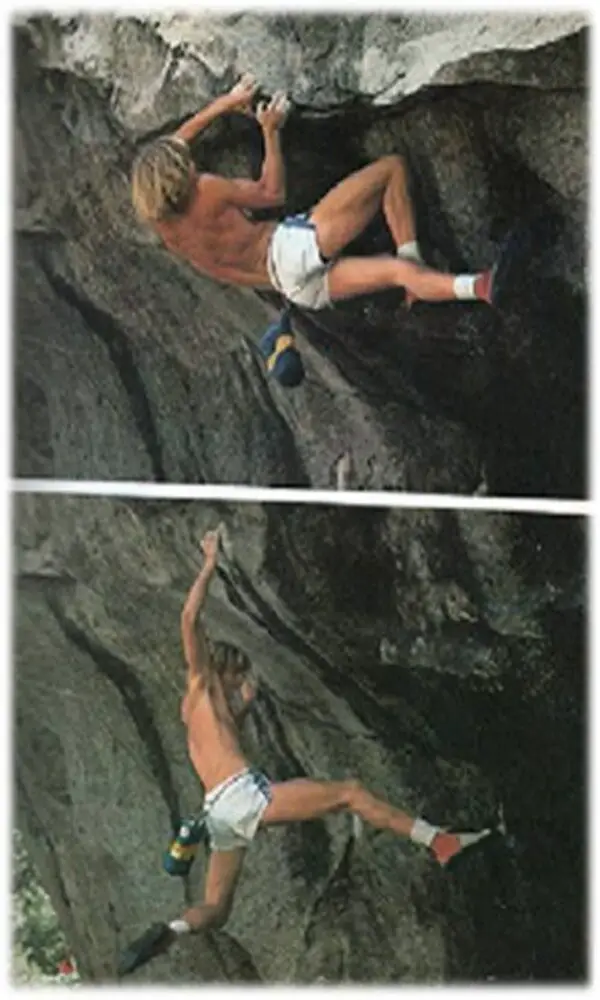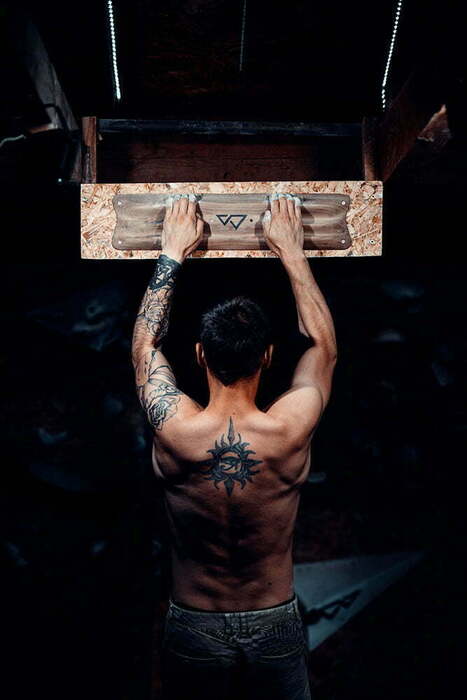The year is 1980. A young John Bachar stands outside of his home in Mammoth Lakes, California, gazing up at the front rafter of his shed. Stretching right to left is a long chain of small wooden rectangles, each one thinner than the last. Casually, he jumps up, clinging to these small cuts of wood by the tips of his fingers. Without any visible effort, he hangs there for about 10 seconds, then drops back to the ground, landing lightly on his feet. He takes a few deep breaths, and then he’s back at it.

This practice that Bachar helped to pioneer is called hangboarding. While it was a new and innovative idea at the time, hangboarding has become one of the most popular tools in a rock climber’s training regimen; most of the strongest climbers in the world employ some iteration of the hangboard in their routine. But what is hangboarding exactly and what is it about this tool that makes it such an effective training aid? In this article, we will dive into some of the finger points of hangboarding – its history, efficacy and why you should invest in one.
History Of Hangboarding
John Bachar was the most famous free soloist of his time. And just like any other professional climber, he was hungry. The desire to continually be pushing the envelope is part of a climber’s anatomical makeup, and Bachar was no different. Eager to raise the bar, he began training off rock as well as on, using both aerobic (cardio) and anaerobic (weight lifting and static strength) exercises to stay strong and lean. At a certain point, however, he started to feel as though he was approaching a ceiling in his climbing abilities. It was time to take things a step further.
Bachar was one of the first to employ the tactic of hanging on small wooden edges to increase finger strength. By creating a venue to train his climbing muscles away from actual rock, he was effectively able to bring the crag home with him. The result was a notable increase in finger strength when he would go rock climbing.
There were others around this same time period who, copycat or not, were doing the same thing. Climbers like Allan Watts, Jerry Moffat, Ben Moon and Wolfgang Güllich – all of whom have been credited with the invention of the first hangboard by one source or another – were blazing trail on establishing harder and harder rock climbs. Thanks largely to the strength they built using the hangboard technique, they were able to achieve great things.
The hangboarding revolution continued into the nineties, enabling more climbers to accomplish their goals. Figures like Lynn Hill, Tony Yaniro, Ron Kauk, and countless others found that their finger strength was immensely improved by using a hangboard. These days, with state-of-the-art climbing facilities in just about every major city, hangboarding is more prevalent than ever!
What Is A Hangboard?
A hangboard is a very specific training tool for rock climbers. Cut from a block of wood or cast from a plastic mold, they are usually about twenty-four inches long and eight to ten inches tall. It features a variety of pockets and edges used to emulate some of the hand holds one might find on a rock climb. To use a hangboard, they must be mounted on a wall or a doorframe at about head height.

Although routines vary based on experience level, a hangboarding session follows a simple structure. The climber will hang on these edges with their fingertips for between five and ten seconds, while their feet dangle just above the floor. After this interval, they let go and rest for a brief period before going back and doing it again. After three or four repetitions, one set has been completed and the climber takes a longer rest before launching into the next set. The idea behind this exercise is to train one’s finger and forearm strength for when they move onto harder rock climbs.
Which Muscles Does Hangboarding Work?
When it comes right down to it, hangboarding is good for training your upper body muscles. Most notably, the fingers, wrists and forearms. As you climb more and more, your grip strength vis-à-vis your finger flexors will increase. With this increase in tensile strength, you will be able to hold onto the wall for longer. This is especially key when attempting a climb that is overhung and where endurance is important. It is also an ally when dealing with thin, crimpy faces where the holds are so small that to use them requires enormous strength.

The upper body receives incalculable benefits from hangboarding. Pullups, or even just bent arm “lock-offs” (hanging with your arms locked), help to build the muscles in the back, shoulders and chest, as well.
If you want to take your climbing to the next level, I strongly suggest you take a look at this video from Emil Abrahamsson.
How Much Does A Hangboard Cost?
Hangboards can cost anywhere from $50 to upwards of $350, depending on the manufacturer and material used. Honestly, and don’t tell anyone I said this, but you can pretty easily make one for yourself at home! Go to the hardware store and purchase a few wooden slats from the lumber section.
You’re looking for widths ranging from 20 mm down to 6 mm, and don’t forget that most lumber yards will cut wood for you. To get sizes this small, you will likely have to ask for the wood to be “ripped,” meaning cut lengthwise along the spine.
Once you have your pieces, give them a quick sand and finish. Mount them on a board with 2 ft long by 1 ft tall dimensions. Next, mount that board onto a doorframe or a wall with room for your lower body to move around freely in front. Boom! You’ve got yourself a hangboard!
Get Hangboarding!
Hangboarding is an incredible tool that can certainly help you achieve your climbing goals. At the same time, it can be a double-edged sword and it is important that you don’t overdo it. If you are new to climbing and still capping out at 5.9 or even 5.10, it is not advisable that you train on a hangboard. Without a baseline for finger strength, you are more likely to hurt yourself (tendonitis, carpal tunnel, damaged finger pulleys, etc.) than give yourself an advantage.



